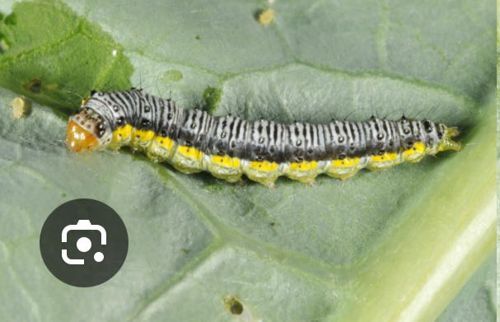Diamondback Moth Larva
Scientific Name: Plutella xylostella
Order & Family: Lepidoptera, Plutellidae
Size: Larvae typically grow to about 10-12 mm in length. Adult moths are small, with a wingspan of 12-17 mm.

Natural Habitat
Typically found in agricultural fields, vegetable gardens, and any areas where cruciferous crops are grown. They are highly adaptable and can be found almost worldwide.
Diet & Feeding
Strictly herbivorous in its larval stage, feeding on the leaves, stems, and sometimes flower buds of cruciferous plants (Brassicaceae family) such as cabbage, broccoli, cauliflower, kale, and radish.
Behavior Patterns
The larva (caterpillar) feeds on host plants, primarily brassicas, by chewing holes in leaves. They spend most of their time feeding and growing through several instars before pupating, often on the same host plant. The adult moth is nocturnal and lays eggs singly on the undersides of host plant leaves.
Risks & Benefits
The Diamondback Moth is a significant pest of cruciferous crops worldwide, causing extensive economic damage to agriculture by defoliating plants and contaminating produce with frass and larvae. It poses a risk to food security in regions heavily reliant on cruciferous vegetables but offers no direct benefits to humans or ecosystems, other than serving as a food source for natural predators and parasites.
Identified on: 8/23/2025